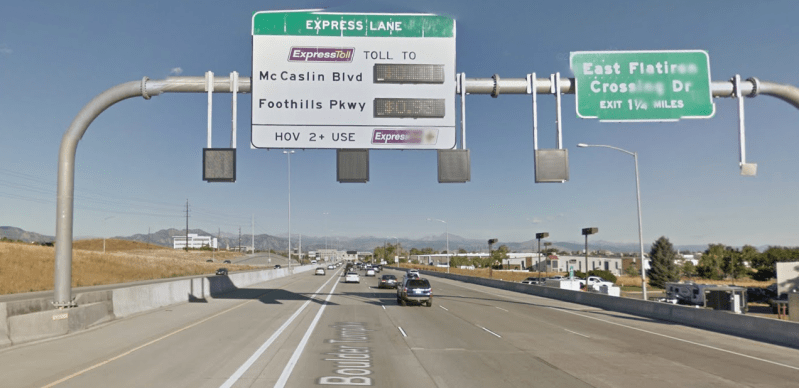No One Expects to Ride Transit for Free, So Why Should Roads Be Any Different?

Colorado lawmakers put forward a ballot measure Thursday that would raise $705 million a year for roads, transit, biking, and walking. At the last minute, they added a largely symbolic obstacle to “managed lanes” — which are available to high-occupancy vehicles or toll-payers.
A Denver Business Journal interview with Colorado Department of Transportation Executive Director Shailen Bhatt apparently unnerved House Speaker Crisanta Duran, one of the bill’s key sponsors. In the interview, Bhatt suggested that new highway lanes would include managed lanes — not new information, but it reemerged at a politically sensitive time. Duran amended the bill to ban building toll lanes with new tax dollars, unless they’re used to “increase travel time reliability and mitigate congestion,” among other exceptions.
The bill leaves plenty of room for toll lanes down the, er, road. As it should. But Colorado has to get over the instinctual and counterproductive aversion to asking people to pay for the roads they use.
When voters approved the FasTracks transit package, no one expected to ride the trains for free.
But there’s a pervasive myth that roads should be free because what drivers pay via the gas tax covers the full costs. That’s not the case. A sales tax hike won’t get us there, either, thanks to CDOT’s highway-widening addiction.
Nationally, gas taxes and tolls barely cover half of what governments spend on roads, according to the Tax Foundation. The rest comes out of general taxes, making road infrastructure heavily subsidized. Toll lanes are one way to stop propping up traffic-inducing road projects with public dollars.
HOV and toll lanes also incentivize buses and carpooling (like on U.S. 36), which helps move more people more efficiently. They smooth out traffic, too. Take CDOT’s I-70 mountain express toll lane, installed last year, which shortened travel time by 18 percent — for people who opted not to use it. By contrast, giving away additional highway lanes for free is just a recipe for congestion.
Of course, the most cost-effective, sustainable, and traffic-busting option is not to widen roads at all, and toll existing lanes.


